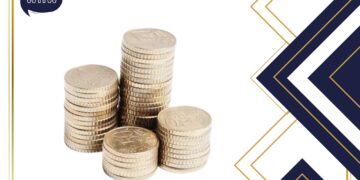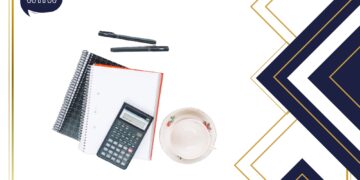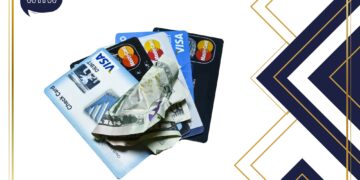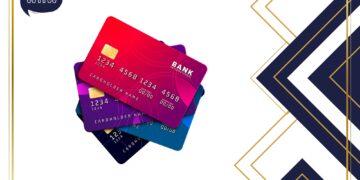How to save money for an emergency?

Saving for an emergency fund and a reserve fund is a great way to stay calm in the face of future uncertainties. Many of us are used to living day to day and often have savings that barely cover the equivalent of a month’s salary. Creating a savings fund, therefore, is essential to keeping sight of your goals, not being left unaccounted for by sudden expenses, and avoiding getting into debt.
What Is An Emergency Fund?
An emergency fund is a piggy bank of savings that protects you from life’s unexpected events. Instead of having to rely on your bank account overdraft or borrow money to get you through a period of particular financial need, you can tap into this savings reserve without worrying about the ripple effect it could have on the rest of your finances.
What Can Be Emergency Situations?
An emergency fund should only be used in the event of a truly unexpected event that requires your urgent attention and financial commitment of some kind.
Here are some examples of emergencies:
- If you suddenly lose your job and your source of income
- If you need to deal with sudden medical expenses
- If the economy goes into recession and you lose a substantial amount of income
- If you suddenly have to take care of a sick family member.
What is the difference between an emergency fund and a reserve fund?
A reserve fund is similar to an emergency fund, but its function is to cover those small expenses that can catch us unprepared. These occasional expenses can occur when for example:
- Your old refrigerator has broken, and you need to buy a new one.
- Your cat needs medical care, and you have to pay veterinary expenses.
- Your car needs a repair.
- You have lost or stolen your smartphone, and you need to buy a new one quickly.
While all of these expenses are necessary, they are smaller than those that would force you to dip into your emergency fund.
How Much Should I Put Into an Emergency Fund?
Saving for an emergency fund and a reserve fund means securing yourself a little serenity for the future. This way, in the event of emergencies or unexpected events, your finances will not be an additional cause of stress, and you can continue to focus on what is important to you.
To enjoy that extra peace of mind that comes from knowing you have put money aside, transferring something into your account as soon as possible (or at least once a month, for example, when your salary arrives) is ideal in order to maintain a sort of cash flow.
The Benefits of An Emergency Fund
The benefits of an emergency fund and a reserve fund are invaluable. Here because:
- You will reduce stress because you will know that you have a solid financial foundation
- You will develop a savings mindset: adequate preparation for the future will prevent you from making rash decisions in the short term
- An emergency fund also protects you from being able to tap into your account in the event of a crisis, thus helping you push forward with your savings goals.
Steps To Save Money For An Emergency Fund
1. Calculate how much you need for an emergency fund
It’s easy to feel overwhelmed by the recommendations for having an emergency fund: three to six months of expenses. The total may seem completely unattainable.
Instead of focusing on the final goal, try to focus on more immediate goals. How long do you think it will take to save $100? How about $1,000? The important thing is to start and then systematically add to the emergency fund. Later, you can decide what your final goal would be and the date by which it is likely to be achieved.
2. Choose how you want to create your emergency fund
Two options can help you save for the emergency fund and also help it grow in leaps and bounds.
Make it automatic: Plan regular contributions to the emergency fund by scheduling fixed direct deposits with each pay cycle into a savings account. If you set aside $25 a week, after two years, you will have $2,600 saved.
Transfer it: Use the bonus money or tax credit you receive to quickly grow your emergency fund. Another idea: if at the end of the month you have something extra left in the budget, you can also add it to the savings.
3. Mentalize and organize yourself
You are clear that a budget that correctly allocates your income is the basis of healthy personal finances, and how to save should be part of that financial planning. To be successful in your goal of building an emergency fund, you should consider that the following factors are required:
- Endeavour, discipline and perseverance to separate an amount from the monthly income always and without exception
- Fortress because it must be untouchable and only used in emergency cases since it intends to preserve the safety and well-being of the family.
4. Be realistic
The next step is to realistically assign a fixed amount to save, which depends on:
Your job and how sure you are about keeping it. Your age and the risks of facing diseases and disabilities that it entails. How close is your retirement? The viability of your accessing new job opportunities, the assets you have to cover any unexpected expenses. The contribution of your partner and family members, if you are an independent employee or microentrepreneur, in which case you must double the amount of the salary you previously received.
5. Plan and define goals
Once the above has been analyzed, you must define the target amount of your emergency fund, which can be equivalent to:
Two months of current monthly salary and an alternate source of income that represents half of the monthly wage is a enough amount to sustain you for six months without acquiring debt.
6. Put your savings plan into action
You already have your budget planned, how much to save and how much your emergency fund should be. Now, it’s time for you to choose where to deposit your money.
Defining which savings account or investment instruments are the most convenient depending on their returns and liquidity is the next step.
Allocating your money to these tools will avoid the temptation to spend it on something else. It will generate interest at the same time as long as you have immediate withdrawal availability.
If your income increases, so should your emergency fund increases too, and you should have a “small fund” and a “large fund”, which you can access depending on the urgency you face.
If you use this fund, devise a recovery plan, which may consist of increasing the amount you saved each month until you can build it up again.
7. Create a Budget
Develop a comprehensive budget that outlines your income and all your regular and discretionary expenses. This budget will serve as a roadmap, helping you identify areas where you can cut back to redirect funds toward your emergency fund.
8. Automate Your Savings:
You can establish a separate account to hold your emergency funds and have payments sent automatically from your main account. Enabling automatic saves will significantly enhance the efficiency of your strategy. Never squander the money you’ve set up for unexpected expenses.
Cut down on unnecessary spending
You can locate any unnecessary additions by going over your budget once more. Cutting back on non-essential spending will allow you to build up a larger emergency reserve. If you reduce your spending on things like eating out and going to the movies, you might be surprised by how much money you saved.
Find out about high-interest savings accounts
The “rainy day” fund could be better off in a high-interest savings account. Interest rates on these accounts are typically higher than those on regular savings accounts. It indicates that your wealth will increase at a faster pace.
Explore High-Interest Savings Accounts
Put up any unexpected funds, such as bonuses, tax refunds, or presents, so that you can maximize their use in your emergency fund. Refrain from frittering away this cash on unnecessary items. You may utilize that money to improve your financial situation instead.
Putting parts together carefully
If you are unable to save enough money immediately to cover your expenses for three to six months, you can raise your savings target until you can. Saving money ought to be ingrained in one’s routine.
Get your emergency fund rolling first
Maintain a liquid cash reserve at all times. You should have a cushion of sufficient funds in your emergency reserve. You can deal with unforeseen expenses in this way, which is better than having significant but insufficient long-term spending goals.
Alter the view
From time to time, review your spending and savings records. Alterations to your savings strategy may be necessary if your life and financial objectives evolve.
Learn something valuable
Acquire as much knowledge as you can about trading and personal finance. Acquiring knowledge of the many tools and strategies available to you will help your emergency fund develop at a faster rate.
Keep it light
If you wish to put money aside in case of an emergency, you must be stable and disciplined. Do not spend funds from an emergency fund on non-urgent matters.
How Much Money Should You Have as an Emergency Fund?
Consumers Union says that an emergency fund should have enough money to cover three to six months of pay. As a safety net, each saver should have a different amount of money set away.
Some people want to use the financial cushion to cover a possible job loss, for example. Other people want to protect their families in the event of financial difficulties. If you own a car, you could use an emergency fund for possible defects. How much emergency fund you should actually have depends entirely on your personal life situation and the monthly costs, which allows you to determine a personal savings goal. After the iron reserve has been opened, it is advantageous to replenish the account in which the emergency fund is located.
The Whys Behind Keeping an Emergency Fund
Financial Flexibility
An emergency fund provides unparalleled financial flexibility. It allows you to handle unexpected expenses without resorting to high-interest debt, preserving your financial health.
Peace of Mind
Knowing that you have a financial safety net instills peace of mind. The confidence that you can handle unforeseen circumstances empowers you to navigate life’s challenges with resilience.
Protection Against Debt Accumulation
People who don’t have a rainy-day fund may end up with more debt because they take money when they need it most. If you have a good backup fund, you can avoid taking out high-interest loans.
Maintaining Long-Term Financial Goals
By safeguarding your financial stability, an emergency fund allows you to stay on course with long-term financial goals. Whether it’s buying a home, investing, or saving for education, having a financial cushion ensures that short-term setbacks don’t derail your broader economic aspirations.
Reducing Stress and Anxiety
Financial stress can have a profound impact on mental and emotional well-being. An emergency fund reduces stress and anxiety associated with the unknown, fostering a sense of control and resilience.
How to grow your emergency fund
Like most things worth doing, getting started is almost always the hardest part. Saving money, however, can be easier than it seems. If you’re having trouble growing the balance of your reserve fund and emergency fund, we suggest some great ways to set aside some extra money:
Add any tax relief, job bonus or money you received as a gift directly into your savings funds.
Earn some extra money by selling online all the items you no longer use. It’s also a great way to put some order at home!
Consider finding an extra job. You can use this additional money to grow your emergency fund or reserve fund.
Try keeping your expenses to a minimum for a month, or if that’s too difficult, set a day each week where you don’t spend anything except necessary overhead costs.
Creating an emergency fund is a crucial step in achieving financial stability and peace of mind. By following these steps and adopting sound financial habits, you can build a robust financial safety net that provides security and resilience in the face of unexpected challenges. Remember that the journey towards financial security is gradual, and every small step you take brings you closer to a more stable and secure financial future.





